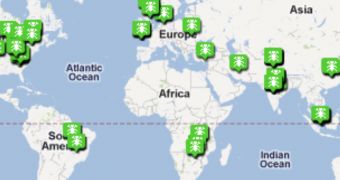A report released by Sophos shows that the United States is still the global leader when it comes to spreading spam.
Even though the US is still on top of the chart, Asian countries seem to battle to keep up, the next three positions being occupied by South Korea, India and Russia.
The numbers reveal that South Korea sends close to 10% of the worlds spam, while India and Russia are both placed near the 8% marker. Brazil also occupies a proud position, being responsible for 5.7% of the unwanted messages that land in our inbox.
If we take a look at the figures that show the continental location of spam sources, Asia takes the lead with 50%, followed by Europe with 21%. Since Africa is still mostly technologically impaired, it's only responsible for 3% of the virtual waste.
South and North America are at the middle of the list with 10% and 14% of the malevolent alerts being sent from these locations.
Unfortunately for home users, most of them don't know that some of the numbers from these charts are actually influenced by they way they protect their PCs.
By leaving our machines infected with viruses and other malware, we might be contributing to global botnets used for different tasks, from DDoS attacks to Bitcoin mining operations.
Besides the importance of a highly secured device that would protect our digital assets these are other good reasons why we should always make sure our machines benefit from an up-to-date anti-virus software, a reliable firewall and a lot of common sense from our part.
If you don't want to contribute to global spamming, make sure you don't jump to open links or attachments contained in emails, don't go chasing incredible offers on shady online stores and never give in when someone is requesting personal information over the phone or online.

 14 DAY TRIAL //
14 DAY TRIAL //